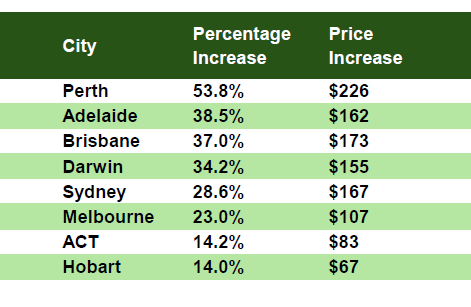
Linking the Housing Market to Self Storage Performance
I stumbled across an article this week that talked about the huge increase in weekly residential rents since COVID-19.
The table below was included in an article published by The Daily Aus – a bite sized daily news email that I subscribe to. The data is sourced from CoreLogic.
Capital city rent increases since COVID-19

It immediately trigged a connection for me, given the knowledge I have on self storage rental growth over the same period. I instantly recognised a similar pattern in self storage rental growth, with Perth, Adelaide and Brisbane having phenomenal increases since the onset of the Pandemic.
If we use the Self Storage Performance Indicator Series that my former team and I created at Cushman and Wakefield, we can create a similar dataset to that published by The Daily Aus on the cities that are tracked. You can see from the numbers in this table that the similarities are remarkable!


To go a step further, the movement in RevPAM – Revenue per Available Metre, which also considers movement in Occupancy as well as Average Storage Fee Rate.
Interestingly, the major cities rank in the exact same order in terms of self storage RevPAM growth as they do for weekly residential rents.
So, what is the link?
Property price increase since COVID-19

All considered, there is a strong correlation to self storage performance and the housing market. As our population increases, and with some easing to interest rates on the horizon, we are likely to see more growth in both sectors.
ALSO READ:
Author

Linda Sharkey | Managing Director Four Leaves Property
Linda is a self storage valuation, optimisation, and sales expert, with coverage and experience across Australia and New Zealand. As the founder of Four Leaves, Linda is passionate about the unique insights the business brings to her clients, and loves to see them grow through knowledge.
